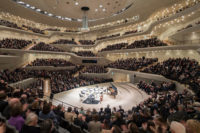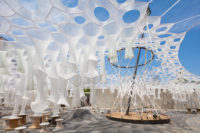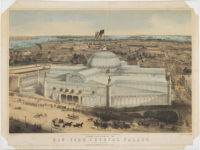For more than 60 million refugees, asylum seekers, and internally displaced people around the world, “shelter” has been experienced through relentless movement and escape. Insecurities: Tracing Displacement and Shelter, which opened at New York’s Museum of Modern Art on October 1st, ponders today’s complex and tumultuous reality by calling into question the notions of safety, ownership, and permanence that the term “shelter” has typically embraced.
The powerful multi-media display—which groups works into three categories: borders, shelters, and camp-cities—comprises an assortment of images, designed objects, and artworks. Included are various photographs of camps and shelters, including structures designed by architects such as Nader Khalili and Shigeru Ban, a plastic tarpaulin sheet and water containers distributed by UNICEF, and media lab Submarine Channel’s interactive map of a refugee camp in northern Iraq. Together, the various works shed light on the scale and magnitude of the conditions brought upon by global crises. According to Sean Anderson, Associate Curator of MoMA’s Department of Architecture and Design, the aim was to “make graphic the experience of living.”
As visitors walk around the gallery, eery echoes of deep-sea ambient noise, slow electric pulses, and the whirr of engaged phone tones, arise from artist Reena Saini Kallat’s piece Woven Chronicle. Intermittent sounds of factory sirens and ship horns add to the viewers’ sense of unease, reflecting the nomadic and vulnerable nature of migrants’ journeys.
But perhaps the most visceral of the exhibition’s collection is its centerpiece: the modular emergency structure jointly designed by the IKEA Foundation, the UN Refugee Agency, and the Better Shelter organization. The roughly 190- square-foot steel-framed, polyolefin-paneled unit is accessible to viewers.To occupy the structure, says Anderson, brings up the question: “Is this an answer?”, and its counterpoint, “Is there a solution?”
Insecurities: Tracing Displacement and Shelter is on view at New York City’s Museum of Modern Art until January 22.
















Post a comment to this article
Report Abusive Comment